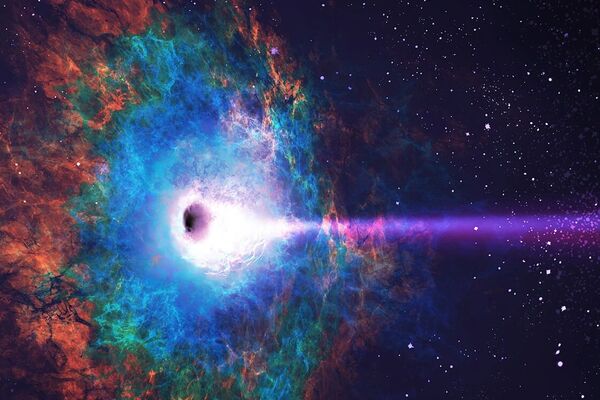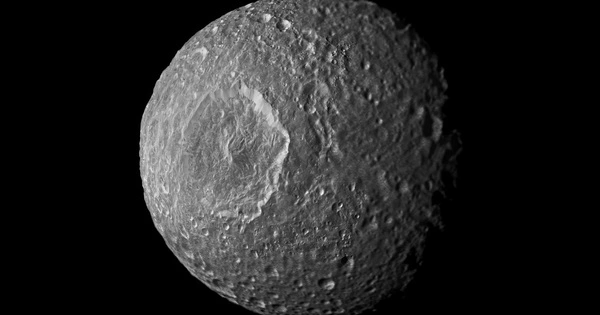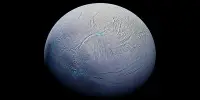Astronomers have discovered the largest stellar black hole ever discovered in the Milky Way galaxy. This black hole was identified in data from the European Space Agency’s Gaia spacecraft because it causes an unusual ‘wobbling’ motion in the companion star surrounding it. Data from the European Southern Observatory’s Very Large Telescope (ESO’s VLT) and other ground-based observatories were used to verify the black hole’s mass, which is an astonishing 33 times that of the Sun.
Stellar black holes are created by the collapse of huge stars, and the ones seen in the Milky Way are on average around ten times the mass of the Sun. Even the next most massive stellar black hole known in our galaxy, Cygnus X-1, only reaches 21 solar masses, making this new 33-solar-mass observation exceptional [1].
Surprisingly, this black hole is also incredibly close to us; at only 2000 light-years away in the constellation Aquila, it is the second-closest known black hole to Earth. Gaia BH3, or BH3 for short, was discovered when the team was examining Gaia observations for an impending data release. “No one was expecting to find a high-mass black hole lurking nearby, undetected so far,” says Gaia project member Pasquale Panuzzo, an astronomer at the Observatoire de Paris, a branch of France’s National Centre for Scientific Research. “This is the kind of discovery you make once in your research life.”
We took the exceptional step of publishing this paper based on preliminary data ahead of the forthcoming Gaia release because of the unique nature of the discovery.
Elisabetta Caffau
To confirm their discovery, the Gaia collaboration used data from ground-based observatories, including from the Ultraviolet and Visual Echelle Spectrograph (UVES) instrument on ESO’s VLT, located in Chile’s Atacama Desert [2]. These observations revealed key properties of the companion star, which, together with Gaia data, allowed astronomers to precisely measure the mass of BH3.
Astronomers have discovered equally huge black holes outside our galaxy (using a different detection method), and they believe they formed as a result of the collapse of stars with chemical compositions that included just hydrogen and helium. These so-called metal-poor stars are predicted to lose less mass during their lifetimes, leaving more material to form high-mass black holes after death. However, evidence linking metal-poor stars to high-mass black holes has been lacking until recently.
Stars in pairs tend to have similar compositions, therefore BH3’s partner may contain significant information about the star that crashed to generate this remarkable black hole. UVES data showed that the companion was a very metal-poor star, indicating that the star that collapsed to form BH3 was also metal-poor – just as predicted.

Panuzzo led the research, which was published today in Astronomy & Astrophysics. “We took the exceptional step of publishing this paper based on preliminary data ahead of the forthcoming Gaia release because of the unique nature of the discovery,” explains co-author Elisabetta Caffau, also a Gaia collaboration member from the CNRS Observatoire de Paris. Making the data accessible early will allow other astronomers to begin investigating this black hole immediately, rather than waiting for the full data release, which is scheduled for late 2025 at the latest.
Further investigations of this system may disclose more about its history and the black hole itself. The GRAVITY instrument on ESO’s VLT Interferometer, for example, could help astronomers find out whether this black hole is pulling in matter from its surroundings and better understand this exciting object.
Notes
[1] This is not the most massive black hole in our galaxy — that title belongs to Sagittarius A*, the supermassive black hole at the Milky Way’s centre, which has about four million times the mass of the Sun. But Gaia BH3 is the most massive black hole known in the Milky Way that formed from the collapse of a star.
[2] Aside from UVES on ESO’s VLT, the study relied on data from: the HERMES spectrograph at the Mercator Telescope operated at La Palma (Spain) by Leuven University, Belgium, in collaboration with the Observatory of the University of Geneva, Switzerland; and the SOPHIE high-precision spectrograph at the Observatoire de Haute-Provence — OSU Institut Pythéas.
















